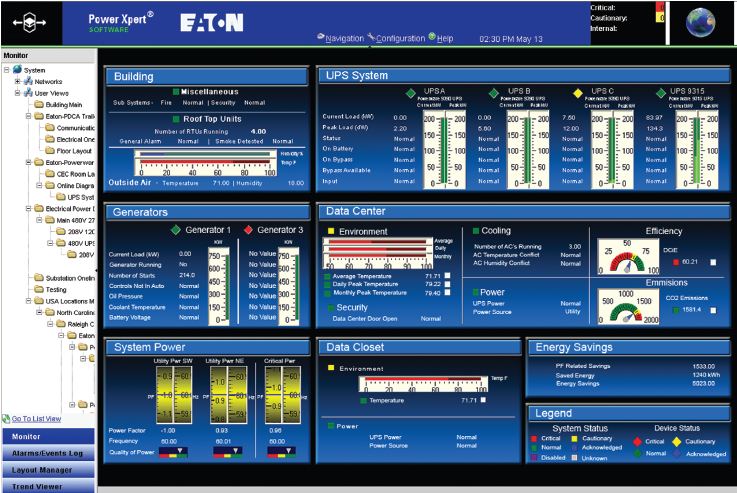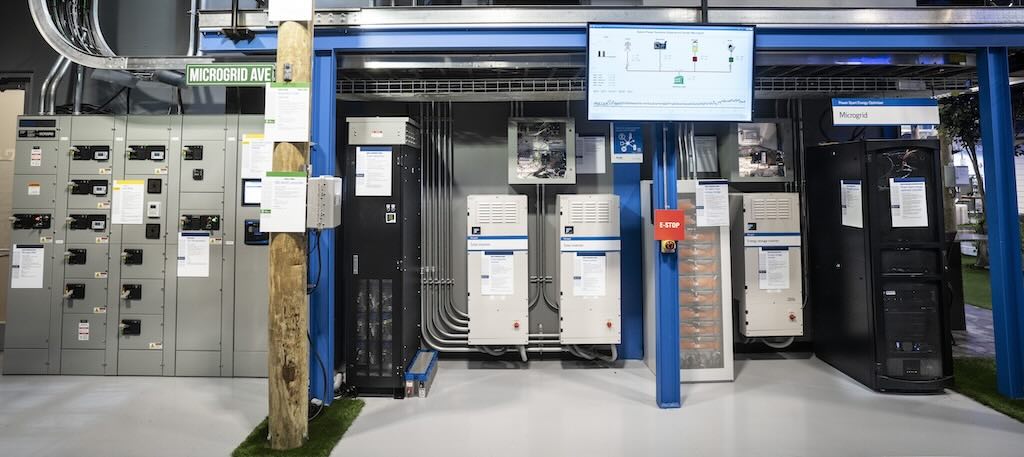Energy use in manufacturing plants and commercial buildings accounts for nearly half of all energy consumption in the U.S. Industrial and commercial facilities are also responsible for nearly half of U.S. greenhouse gas emissions, which contribute to climate change.

Energy use in manufacturing plants and commercial buildings accounts for nearly half of all energy consumption in the U.S. Industrial and commercial facilities are also responsible for nearly half of U.S. greenhouse gas emissions, which contribute to climate change.
Therefore, the drumbeat to reduce energy consumption and costs is louder today than ever before. As organizations look at cost-cutting measures, there is increasing pressure to drive down power consumption and optimize operations. At the same time, new energy policies and building codes keep raising the bar, and enforcement is catching up. Strategically managing power optimizes operations and minimizes the environmental and economic impacts associated with excessive energy use.
Facility and energy managers are now tasked with finding ways to both reduce energy consumption and use energy more efficiently, which is key to building a solid energy management program within an organization. The first step in this process is simply to do a facility audit to identify wasteful practices and replace older non-energy-friendly devices. This alone typically yields significant savings. The next steps go beyond simple observation and switching out wasteful equipment or lighting.
You cannot manage what you do not know. Without real-time and historical data about power consumption, how can you identify inefficiencies? And, when improvements are implemented, how do you know if they are effective? If a utility overcharges, how can you prove it wrong?
This is analogous to treating a medical condition like hypertension. Blood pressure data, exercise habits, weight, family history, and other parameters guide treatment and medication. Would you start a treatment regimen to reduce your blood pressure without having those data points at hand?
Similarly, strategic energy management hinges on real-time and historical data to make decisions that deliver real savings, reduce consumption, enhance safety, and improve system reliability and sustainability. Conveniently, electrical equipment today is increasingly communications enabled—there is a wealth of data available. But making sense of the exhaustive power and energy data is challenging. Also, integrating information from aging equipment across facilities and global enterprises emphasizes the need for holistic decisions and actions.
Start with an energy audit
A basic energy audit evaluates how much and how efficiently energy is being used, and is a key first step to managing energy across a facility or enterprise. Since electrical power makes up the majority of energy costs, it is the focus of the analysis during an energy audit. That said, water, steam, lighting, HVAC, and other systems are naturally also evaluated.
A basic energy audit identifies major energy conservation opportunities, discusses corrective measures, and estimates corresponding energy reductions and cost savings. It provides enough detail to prioritize projects and determine the need for more detailed audits, studies, or design. Also, an energy audit validates the effectiveness and sustainability of energy management initiatives.
Metering equipment
Meters typically provide the historical energy usage data collected and analyzed during the audit. Meters keep a continual log of electrical parameters including volts, amps, watts, kilowatt-hours, power factor, and so on, essentially providing a blueprint of what’s going on with the electricity in a facility.
To establish data points and track how power is consumed, power quality meters should first be installed at the service entrance. This provides information on both the quality of the power the utility is delivering and the amount of power consumed. Now, if there is a discrepancy between what the utility charges and what is consumed, actual consumption can be demonstrated along with power quality data.
The energy audit recommends loads and circuits that should be metered. Typically, meters are installed at the largest loads. Critical loads and equipment that use 2000 amperes (A) or more are also typically metered.
Aggregating data
Meters need to be in place to gather power and energy data. Today, there is an excellent selection of Ethernet-enabled meters that allow for remote monitoring and data logging. This new generation of meters eliminates the need for “sneaker-net” reading of legacy analog meters. It is recommended that analog meters be changed out in order to facilitate the efficient gathering of accurate data.
Most facilities include equipment purchased from multiple manufacturers over many years and brought online over time. This equipment is still viable when used in conjunction with gateways that use open communication architecture and can connect to legacy electrical equipment from multiple manufacturers, making energy and power data accessible through a Web browser.
Gateways can be used with small systems or scaled for organizations with multiple facilities. For small systems, Web-enabled gateways can be a stand-alone solution, logging and trending energy and power data, comparing information across devices, and delivering the information through on-board Web pages via a standard Web browser. In addition, many gateways can also serve as data collection and alarm notification delivery points.
Make sense of energy data
When there are hundreds of devices to manage, monitor, and track, a central monitoring system is essential to pull data together into understandable, actionable information. Energy management software takes care of the math, trending data to manage expenses. It makes it easy to compare equipment or facility consumption across an enterprise to identify electricity hogs and wasteful practices. Monitoring software helps to calculate the return on replacing equipment, even capturing incentives for energy-efficient equipment.
With a Web-based software package, typically a single installation is needed. Any authorized personnel can then access a single IP address for power and energy data.
Energy monitoring software covers event notifications and alarms, enabling quick response to power events. Alarms with varying degrees of severity can be set through the software, which can then notify personnel when those parameters are met. Further, the software can be configured such that alarms are directed to the right person(s), depending on the time of day, shift, and other variables.
Data intelligence delivers real savings
Building from an energy audit, metering power consumption and capturing data across the enterprise and making sense of it through software and reporting provides information to understand the root cause of power problems. That information yields both short- and long-term returns.
Enhancing safety: Personnel can avoid “sneaker-net” reading of meters, saving time and avoiding high-voltage equipment and arc flash boundaries.
Reducing costs: By monitoring electrical consumption, facilities are able to proactively implement solutions to manage power demand. Electricity rates vary depending on the time of day power is consumed. In other words, avoiding or minimizing operation of some equipment during peak demand windows can achieve savings.
Software makes it easier to see where energy is being wasted and savings can be realized. Simply turning off the lights or computers at night could generate savings that can be quantified through the monitoring software.
Improving reliability: Alarming enables facilities to respond quickly to electrical events. When critical systems are at stake, immediate, real-time action is required.
Energy data also provides operating flexibility. When maintenance requires some equipment to be taken offline, personnel will better understand the impact on the system as a whole.
Support sustainability: By monitoring energy consumption and efficiency, as well as greenhouse gas reporting, facilities are able to provide the documentation needed to support U.S. Green Building Council Leadership in Energy and Environmental Design (LEED) credits.
Capturing and understanding power and energy data nets useful information and creates value. It sets the stage for the intelligence required to achieve cost savings, prevent equipment or process downtime, and support sustainability initiatives.
Aaron is a product line manager at Eaton and has more than 25 years of experience in the electrical industry, with expertise in both industrial motor control and power quality. Maxwell is the product manager at Eaton for Power Xpert Software and Reporting with over 20 years of experience in IT and power management system software in Europe and the U.S.



